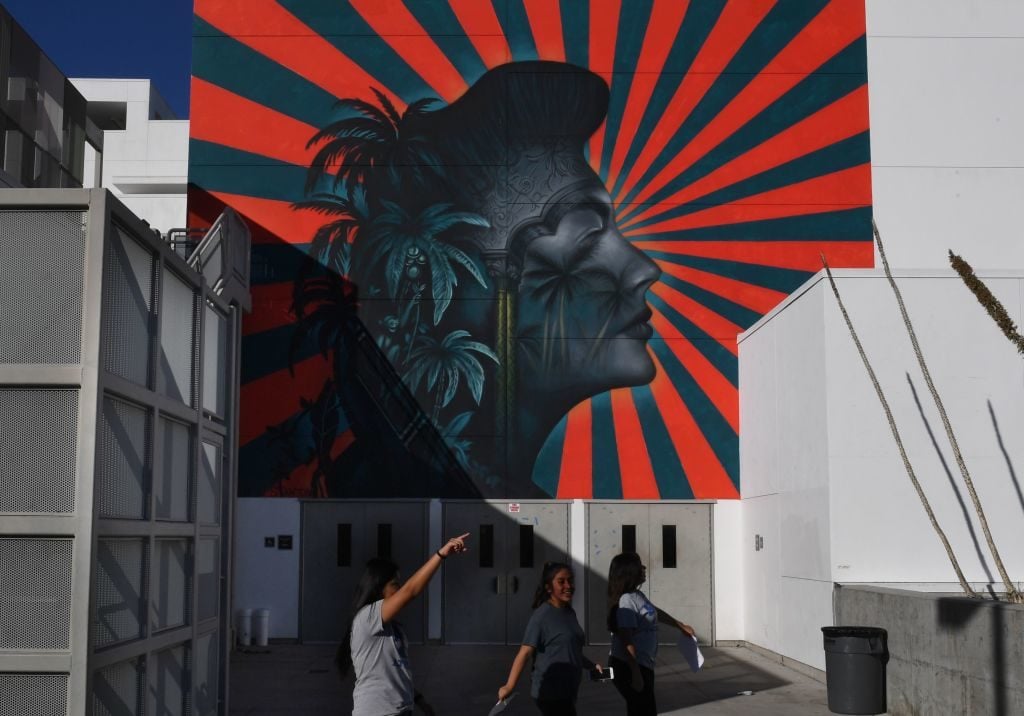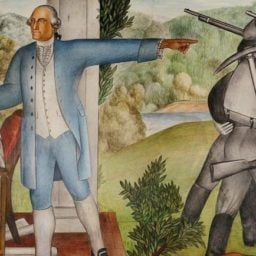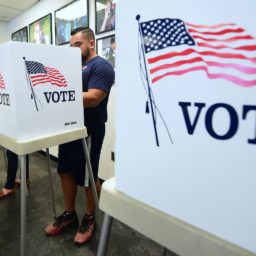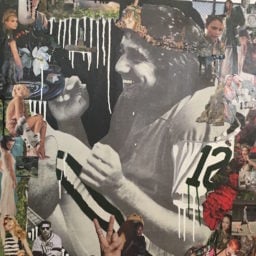The Los Angeles school district has paused plans to whitewash a controversial mural by artist Beau Stanton at the Robert F. Kennedy Community Schools complex in Koreatown after Shepard Fairey threatened to cover up his own nearby mural in solidarity with his fellow artist.
Stanton’s work depicts the late actress Ava Gardner on a backdrop of blue and orange sun rays. It was targeted by Korean-American activists who complained that the sun-ray pattern is similar to that of the Japanese Imperial flag, which has become a symbol of the atrocities Japan committed before and during World War II, particularly in China and Korea. In response, the school district announced plans to cover it up.
Stanton has said he plans to sue the school district if his work is painted over, and has already instructed his lawyer to send a letter.
Meanwhile, Fairey’s mural commemorates the assassination of the Robert F. Kennedy, who was shot and killed in 1968 at the Ambassador Hotel, which stood on the site where the school complex is now located. The artist says he threatened to remove his work in order to stop city officials from censoring that of his colleague. “I’m proud of that mural,” he told the Los Angeles Times on Sunday, “I’d love for that mural to stay, but this is the only leverage I have.”
The school system’s administrator of operations, Eugene Hernandez, temporarily stopped the whitewashing on Monday, the LA Times reported. “As a result of the extensive input, there is a need to have additional conversation,” he said. “Therefore, we will not be taking immediate action on the mural at this time.”
Stanton has said that his mural is in fact an homage to the Coconut Grove nightclub, a 1930s Hollywood hangout that was once located nearby. (The leader of the Korean-American activists, Chan Yong “Jake” Jeong, has said he accepts the artist’s intentions, but still wants the mural to be erased.) Unlike the Japanese battle flag, which has 32 equally proportioned rays in red and white emanating from a central red circle, Stanton’s mural has 44 differently proportioned rays in blue and orange emanating from Gardner’s face. As a symbol, the Japanese Imperial flag has been compared to the Confederate flag and the Nazi swastika.
“Yeah, these things happened and they’re part of a terrible history, but this mural has nothing to do with that,” Fairey added. “What he has in his mural is nothing close to the battle flag. It’s not the same color scheme. It’s not the same focal element. It’s stupid to me. I thought that cooler heads would prevail because this is absurd.”
Stanton has also won support from other prominent allies, including members of the Kennedy family. “We are aware of the power of symbols and we stand with Shepard Fairey and Beau Stanton” against the censorship of public art,” Robert F. Kennedy’s son, Maxwell Kennedy, told the LA Times. “Symbols can be hurtful and there are some symbols that should not be displayed. But rays of light are synonymous in this country with hope.”









